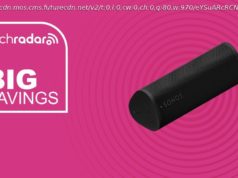Dali goes downmarket(-ish) in doubling its headphone output
Dali IO-8: Two-minute review
The Dali IO-8 are the wireless over-ear noise-cancelling result of the company’s attempts to cater for more mainstream customers. A brand like Dali should have more than one pair of wireless over-ear noise-cancelling headphones in its line-up, of course, especially when the one pre-existing pair it does have costs pennies less than £1,000 in the UK. Yet, even at a price of £599, the aforementioned word ‘mainstream’ is perhaps not the first that should spring to mind for the new Dali IO-8.
With one fairly notable exception, the IO-8 are specified to compete at this fiercely contested price point for the best noise-cancelling headphones crown. They’re very acceptably built and finished, from high-quality materials (although the real leather isn’t going to excite vegan customers). Bluetooth 5.2 with aptX Adaptive compatibility, 30 hours of battery life with ANC engaged, 24bit/96kHz support, 50mm full-range drivers with 10Hz-43kHz frequency response… these are all welcome features. The ability to work passively, with no requirement for power, when wired via an analogue connection, is a very nice touch too.
Only the lack of a control app sounds a slightly bum note, no matter how Dali might seek to spin it as a virtue.Dali IO-8 review: Price & release date
Released on October 8, 2024
Priced $899 / £599 / AU$TBC
The Dali IO-8 wireless over-ear noise-cancelling headphones launched on October 8, 2024, and in the United Kingdom they currently sell for £599. In the United States they’ll cost you $899, while in Australia the going rate has not officially been confirmed, at the time of publishing (but it’ll be around AU$1,165 or thereabouts).
These are affordable wireless headphones by Dali standards, true, but everything’s relative, isn’t it? This sort of money can buy you some extremely well-regarded alternatives from brands that don’t necessarily consider $899 to be ‘entry-level’.Dali IO-8 review: SpecsDali IO-8 review: Features
50mm free edge full-range dynamic drivers
Bluetooth 5.2 with SBC, AAC, aptX HD and aptX Adaptive compatibility
35 hours of battery life
As far as the ‘wireless’ part of ‘wireless over-ear noise-cancelling headphones’ goes, the Dali IO-8 use Bluetooth 5.2 for connectivity, and have compatibility with SBC, AAC, aptX HD and aptX Adaptive codecs. But it’s also possible to use them via a wired connection – the USB-C socket on the right earcup can be used for data transfer as well as for charging the battery, and connected this way they’re able to deal with digital audio files of up to 24bit/96kHz resolution. Obviously you can give them even larger files to deal with, but these will be downscaled before the digital-to-analogue conversion takes place.
Dali provides a USB-C / USB-A cable in a reasonably compact travel case, and also includes a 3.5mm / 3.5mm analogue alternative. There’s a 3.5mm input on the left earcup, and if you make an analogue connection to a source player the Dali don’t even need to be powered on. Flat battery? No problem: the IO-8 can be used passively, which is a definite bonus.
Mind you, letting the battery run flat will smack of negligence. The Dali will run for 35 hours from a single charge with active noise-cancelling switched off, and if you switch it on that figure drops to a still-competitive 30 hours. The ANC itself (or ‘audiophile active noise-cancelling’, as Dali rather self-importantly has it) has ‘on’, ‘off’ and ‘transparency’ settings, and the company has tuned it for maximum sound quality rather than maximum noise-cancellation.
No matter how you get your audio information on board, it’s delivered to your ears by a couple of 50mm free edge full-range dynamic drivers that are good, suggests Dali, for a frequency response of 10Hz-43kHz. Just as it does with its full-size speakers, Dali has built these drivers from a paper fibre material with randomly aligned fibres of varying lengths to create a light-yet-stiff diaphragm with optimal damping.
As far as control is concerned, there are a couple of options here. Each earcup features a couple of mic openings – Dali has used cVc technology for telephony, and these mics also allow communication with your source player’s native voice assistant. In addition to its USB-C input, the right earcup features a combination of push- and touch-controls covering ‘play/pause’, ‘volume up/down’, ‘skip forwards/backwards’, ‘answer/end call’ and ‘power on/off/Bluetooth pairing’ as well as cycling through your ANC options or choosing between two EQ settings (‘hi-fi’ or ‘bass’).
Home
United States
USA — software Dali IO-8 review: great-sounding noise-cancelling headphones, but 'entry-level' this is not






